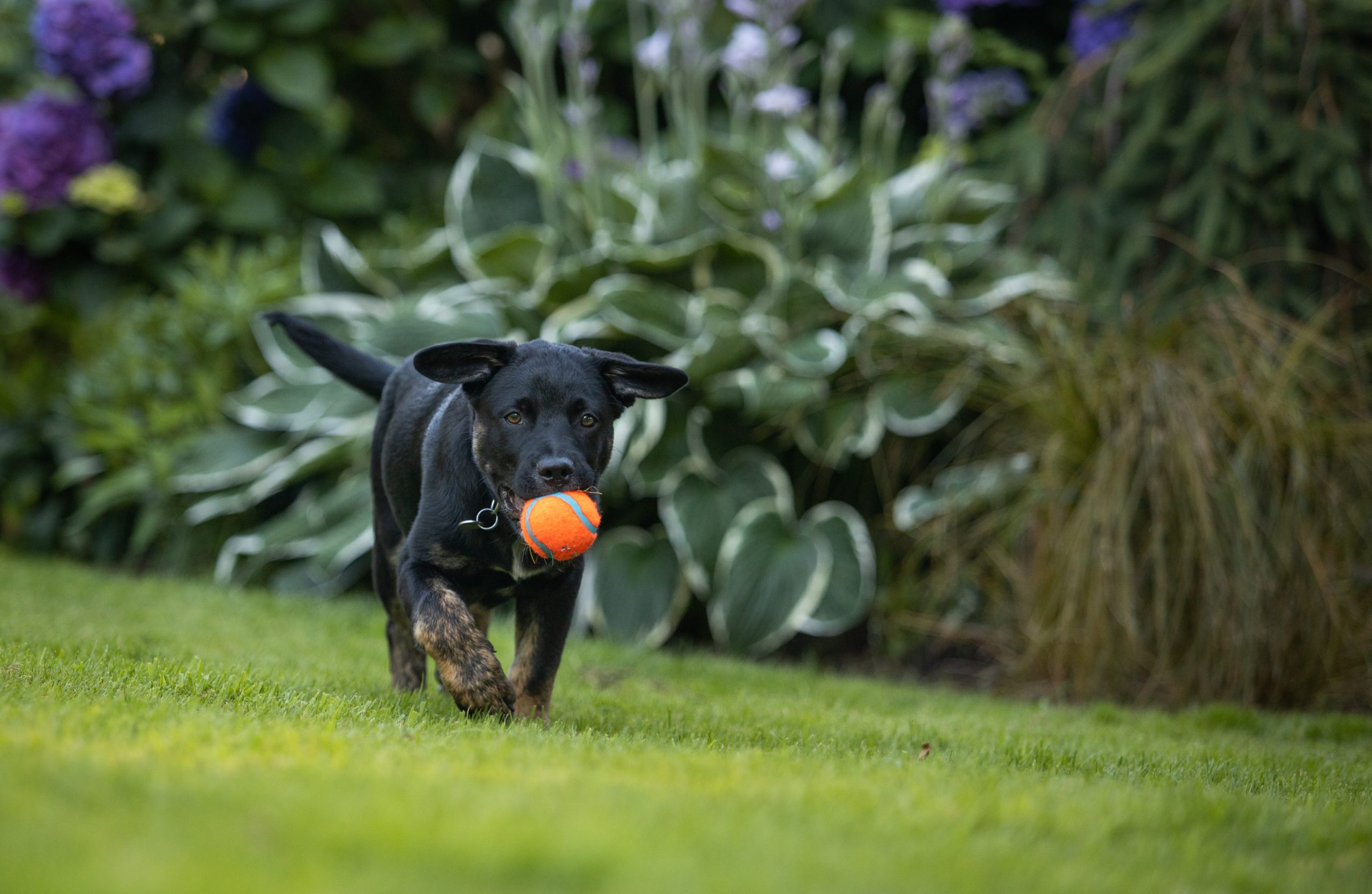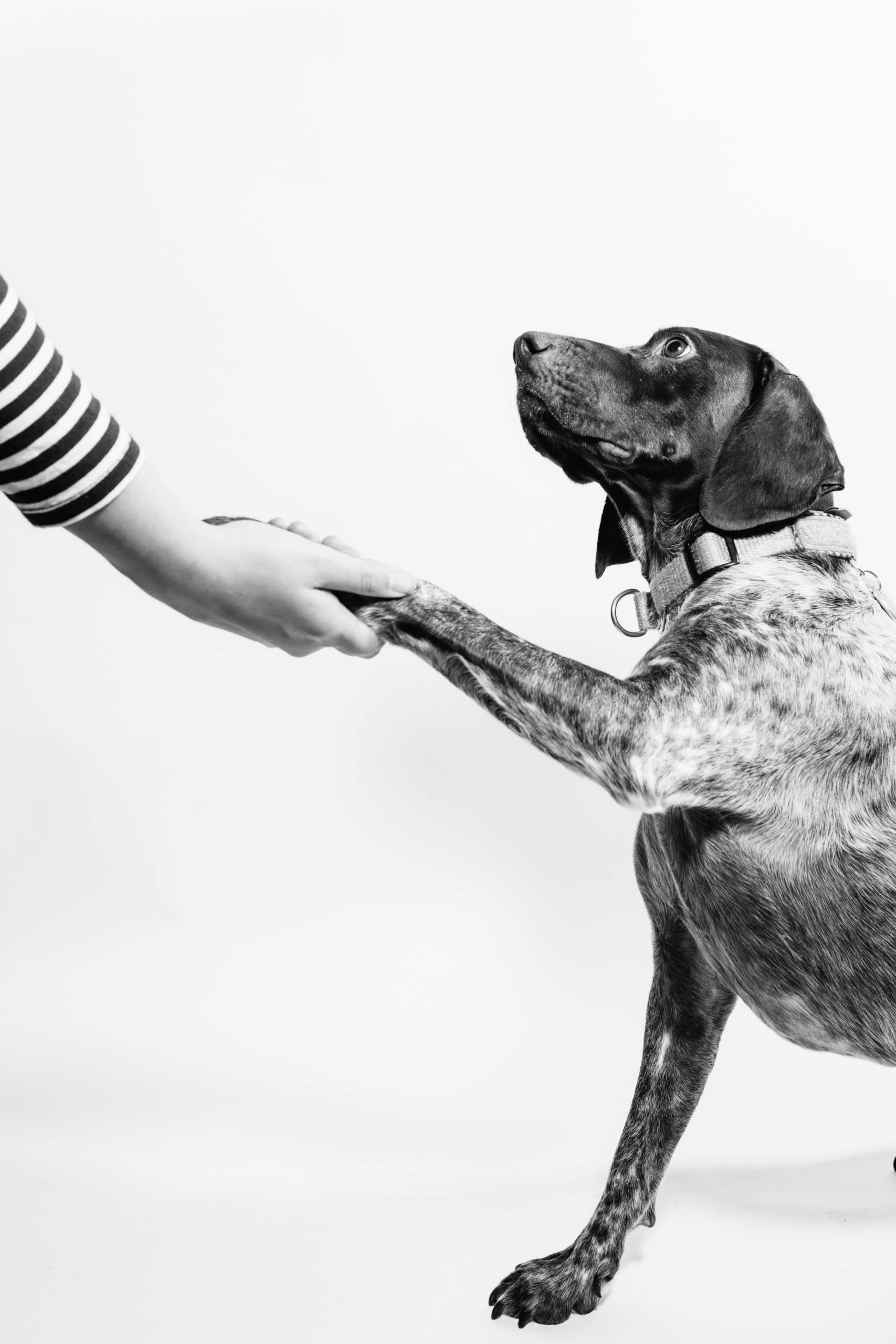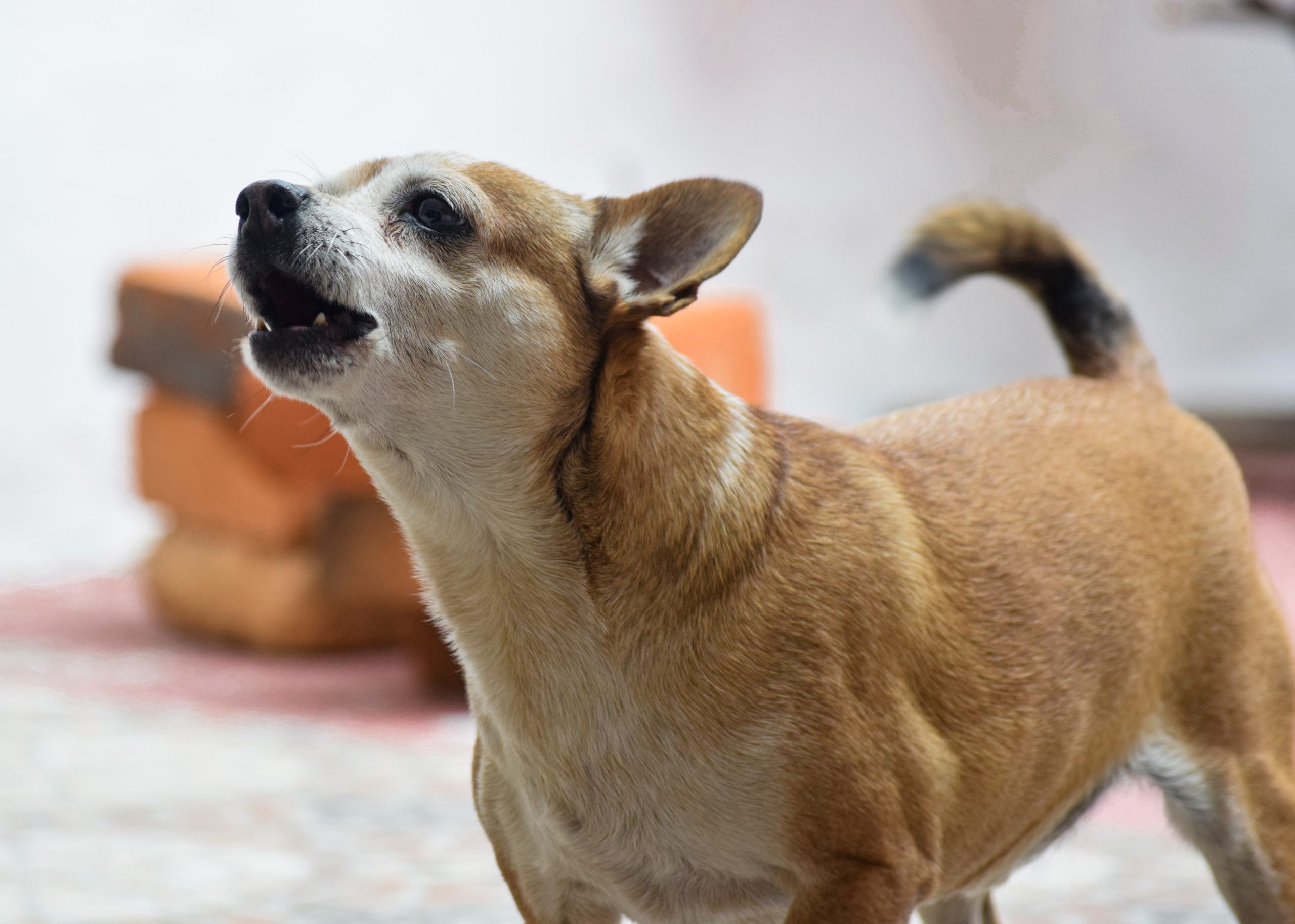Your backyard should be a safe haven for your beloved canine companion to play, explore, and simply enjoy the great outdoors. However, without proper dog-proofing measures in place, it can also be a source of hidden dangers and potential hazards for your furry friend.
In this blog post, we’ll delve into the various aspects of dog-proofing your backyard – from understanding your dog’s natural tendencies to creating a secure outdoor space that ensures their safety and happiness.
Understanding Your Dog’s Natural Tendencies
Assess your dog’s size and breed to determine their natural tendencies, such as if they are a jumper or digger.
Assessing Your Dog’s Size And Breed
To effectively dog-proof your backyard, it is crucial to take into consideration the specific size and breed of your canine companion. Certain breeds have unique traits, behaviors, and physical capabilities that can influence the way they interact with their environment.
Understanding your dog’s breed-specific tendencies can provide valuable insights when planning safety measures in your backyard. Take a moment to research your dog’s breed characteristics and common behaviors they exhibit.
For example, Beagles are known for their strong sense of smell, which means you should ensure any potentially toxic plants or chemicals are securely stored away from curious noses.
Knowing Your Dog’s Escape Behaviors
It is important to understand your dog’s escape behaviors when you’re trying to dog-proof your backyard. Some dogs are excellent jumpers, while others can dig their way out of almost anything.
For example, some dogs may try to bolt through an open gate or door whenever they get the chance. Others might constantly scratch at a certain area under the fence until it gives way and provides an opening for them to slip through.
It’s also important to remember that even if your pup doesn’t have a history of escaping, accidents can happen.
Understanding Digging And Chewing Behaviors
Dogs have a natural tendency to dig and chew, which can be problematic if you’re trying to dog-proof your backyard. Digging is often a form of entertainment or an attempt to escape from the yard, while chewing can be a way for dogs to relieve stress or boredom.
To prevent digging, consider providing your dog with designated areas for digging, such as sandboxes or patches of dirt that won’t damage your lawn.
To prevent destructive chewing behaviors, make sure you provide plenty of toys and chews that are appropriate for your dog’s size and breed. Remove any potential hazards like electrical cords or poisonous plants from his reach.
Providing daily exercise and mental stimulation through activities like training sessions and interactive playtime can help reduce these tendencies.
By taking steps to understand and manage these natural canine behaviors, you’ll be able to keep your furry friend safe and happy in your backyard oasis.
How To Dog-Proof Your Backyard
Choose safe and dog-friendly plants, secure compost and garden products, install or repair your fence, consider natural repellents, and provide an outdoor kennel or run to keep your furry friend safe in the backyard.
Choose Safe And Dog-Friendly Plants
When choosing plants for your backyard, it’s essential to consider your dog’s safety. Dogs are curious animals and may chew or ingest plants that are toxic to them. Here are some safe and dog-friendly plant options:
- Sunflowers: These plants provide shade in the yard, and their seeds can be a healthy treat for dogs.
- Chamomile: Chamomile has calming properties and is safe for dogs to ingest. It also has many medicinal properties.
- Marigolds: Marigolds can repel bugs and act as a natural flea repellent.
- Parsley: Parsley is a tasty herb that is safe for dogs to eat, and it also freshens their breath.
- Blueberries: Blueberries are an excellent source of antioxidants, vitamins, and minerals and make a great snack for dogs. Plus, they’re easy to grow.
Remember always to research the plants you’re considering before adding them to your yard. Some plants can be harmful or toxic to pets, so double-checking or consulting with your vet is always a good idea.
Secure Compost And Garden Products
Dog owners must also ensure that their compost and garden products are stored securely. Dogs may be attracted to the smell of compost and can accidentally ingest it, causing illness or even death. Here are some tips for securing your compost and garden products:
- Store compost in a sealed container with a lid.
- Choose a location that is away from your dog’s reach.
- Use pet-friendly fertilizers and pesticides in your garden.
- Store all chemicals, such as insecticides and herbicides, in an area that is inaccessible to dogs.
- Keep all gardening tools out of reach to prevent dogs from ingesting them.
By taking these precautions, you can keep your dog safe from the potential dangers associated with compost and garden products. It’s essential to supervise your pets while they are in the yard to ensure their safety at all times. Prevention is key when it comes to keeping your furry friend happy and healthy!
Install Or Repair Your Fence
Installing or repairing a fence is crucial to keeping your dog safe and contained in your backyard. Here are some tips:
- Choose a fence that fits your dog’s size and breed. For example, if you have a small dog, a picket fence might be sufficient, but for larger dogs, consider a solid wood or chain-link fence.
- Make sure the fence is tall enough to prevent your dog from jumping over it.
- Secure the bottom of the fence to prevent dogs from digging underneath it.
- Repair any holes or gaps in the fence to ensure that there are no escape routes for your furry friend.
- Consider adding an electric wire or shock collar if necessary as an additional safety measure.
Dogs love to explore and roam around their environment, so it’s important to make sure they have a safe and secure place to play in your backyard without the risk of escaping or getting lost.
Consider Natural Repellents
There are many natural repellents that can help keep your furry friend safe in the backyard. Citronella, for example, is a great plant to place around the yard as it repels insects that may carry diseases harmful to dogs.
You can also use vinegar or apple cider vinegar mixed with water to spray on areas where you don’t want your dog to dig or chew.
It’s important to note that some plants like geraniums and marigolds can be toxic to dogs if consumed, so ensure any natural repellents you choose are pet-friendly.
Provide An Outdoor Kennel Or Run
If you’re worried about leaving your dog unsupervised in the backyard, an outdoor kennel or run can be a lifesaver. These fenced-in areas allow dogs to play and exercise without being able to escape or get into trouble elsewhere in the yard.
Kennels and runs come in all shapes and sizes, so you can choose one that suits your dog’s breed and size. If your dog likes to dig, consider installing a concrete floor or adding a sandbox for them to burrow in safely.
Pet owners also need to ensure their pets have enough room inside their kennels because cramped spaces may lead them to depression and anxiety attacks. Using absorbent materials on the floors will help with keeping them clean while still giving pets more comfort when they stay there for longer periods of time.
Precautions For Neighboring Dogs And Wildlife
Prevent unwanted visitors by securing gaps and holes in your fence or opting for a taller fence where necessary.
Preventing Unwanted Visitors
It’s important to take precautions in order to prevent unwanted visitors from entering your backyard and potentially harming or disturbing your dog. One easy way to do this is by installing a secure fence around the perimeter of your yard.
This will not only keep out other animals but also discourage strangers from entering your property.
Additionally, consider using natural repellents such as lemon juice or vinegar around the perimeter of your yard. This can deter wild animals and pests from venturing into your space.
Keeping garbage cans securely sealed and away from areas where dogs play can also help prevent unwanted visitors.
Minimizing Distractions
To minimize distractions in your backyard and keep your dog safe, it’s important to first identify any potential sources of distraction. This can include noisy neighbors, wildlife, or even a busy street nearby.
Another way to minimize distractions is to train your dog in obedience and basic commands so they are focused on you while outside. This will help them stay calm and less likely to be distracted by any noises or movements around them.
By taking these steps and minimizing distractions in the backyard environment, you can ensure that your furry companion remains happy and healthy while enjoying their outdoor space with ease.
Outdoor Training Enclosures
Providing an outdoor training enclosure is a great way to give your dog some extra space to play and exercise while keeping them contained. This can be especially helpful for dogs that have high-energy or need more activity than just regular walks around the block.
There are many types of enclosures available on the market, including portable ones that you can easily move around your yard or even take with you when traveling. When choosing an enclosure, consider the size and breed of your dog, as well as their jumping and digging behaviors.
Another benefit of having an outdoor training enclosure is that it provides a designated area for potty training, which can help reduce accidents in other parts of your backyard.
It’s also important to note that if you live in an apartment or don’t have access to a large yard, there are still options available for providing outdoor exercise and potty breaks for your furry friend – such as using a small balcony or building an indoor pet potty area.
Keeping Your Dog Safe And Happy In Your Backyard
Provide shade and water for your dog in the yard.
Identifying Common Backyard Dangers
Dog owners should be aware of the potential dangers that exist in their backyards to ensure their pets remain safe and healthy. Here are some common backyard hazards:
- Toxic plants: Many common garden plants can be poisonous to dogs, including lilies, azaleas, and daffodils. Remove these plants from your yard or ensure they are out of reach.
- Chemicals: Pesticides, herbicides, and other lawn chemicals can be toxic if ingested by dogs. Keep these products away from pets and dispose of them properly.
- Water sources: Unsupervised access to pools or ponds can pose a drowning risk for dogs. Always supervise your dog when near water and consider fencing off any pools or ponds.
- Sharp objects: Broken glass, rusty nails, and even sharp twigs can cause serious injury if stepped on by a dog. Regularly clean up any debris in your yard to avoid accidents.
- Heat exhaustion: Dogs can suffer from heat exhaustion if left outside in hot weather for too long without shade or access to water. Provide ample shade and fresh water for your pet.
- Wildlife: Unsecured garbage cans or compost bins can attract animals like raccoons and skunks that could potentially harm your dog. Secure these items and keep an eye out for any dangerous wildlife in your area.
- Fences: Check regularly for loose or damaged fence boards that a dog could escape through or get stuck in.
By being aware of these potential backyard hazards, dog owners can take precautions to keep their furry friends healthy and safe while enjoying time outdoors together.
Ensuring Safe Play Areas
It’s important to provide a safe play area for your dog in your backyard. This means removing any potential hazards that could harm or injure your furry friend. Make sure any sharp objects, like gardening tools, are put away and out of reach.
Additionally, avoid using fertilizers or pesticides that can be toxic to dogs.
Another way to ensure a safe play area is by providing shade and water stations for dogs during hot weather months. Dogs can become easily dehydrated and suffer from heatstroke if they do not have access to cool water and shaded areas.
Lastly, regularly check and maintain the yard for any potential hazards as this helps prevent nasty surprises down the road.
Providing Shade And Water
Ensuring that your furry companion has access to shade and water is vital when dog-proofing your backyard. Dogs can quickly become dehydrated, especially during the hot summer months.
Providing fresh drinking water every day in a spill-proof bowl placed in a shaded area can help keep your pet healthy and happy.
Along with hydration, providing ample shade will help keep dogs cool and comfortable while playing outside. This is particularly important for dog breeds that are prone to overheating or have thick coats.
Planting trees or installing a canopy or umbrella over an outdoor play area are great ways to provide natural shade. Additionally, you can create a DIY shelter using materials like pallets or tarps for added protection on warmer days.
Regularly Checking And Maintaining Your Yard
To ensure the safety of your furry friend, it is important to regularly check and maintain your yard. This involves removing any hazardous items such as sharp objects or toxic plants that can pose a threat to their health.
It also means keeping an eye out for any newly dug holes or weak spots in the fencing through which they might escape.
You should also keep up with regular maintenance tasks like mowing the lawn, trimming shrubs, and cleaning up fallen leaves and debris. Overgrown vegetation can harbor fleas, ticks, snakes, and other unwanted visitors that could harm your pup.
In addition to avoiding unwanted guests in your yard, regular maintenance will create a clean environment where dogs are less likely to get sick from eating something harmful or getting hurt while playing fetch with you.
Additional Tips For Ensuring Your Dog’s Safety
Here are some additional tips to ensure your dog’s safety in your backyard:
- Provide plenty of shade: Dogs can overheat quickly, especially during summer months. Make sure to provide shaded areas where they can rest and cool down.
- Keep the yard clean: Regularly pick up any pet waste or debris to keep the yard clean and safe for your dog.
- Check for hazards: Regularly inspect the yard for any potential hazards such as sharp objects, poisonous plants, or toxic chemicals.
- Use pet-friendly lawn care products: Choose lawn care products that are safe for pets to avoid accidental poisoning.
- Provide fresh water: Make sure your dog has access to fresh, clean water at all times while in the backyard.
- Train your dog: Teaching your dog basic commands such as “stay” and “come” can help keep them safe if they do manage to escape the yard.
- Supervise playtime: Always supervise your dog while they are playing in the backyard to prevent accidents or injuries.
A properly dog-proofed backyard not only keeps your furry friend safe but also provides a fun and enjoyable outdoor space for you both to enjoy!
Conclusion
Dog proofing your backyard is crucial for ensuring that your furry friend can safely enjoy the outdoors. By understanding your dog’s natural tendencies and behaviors, you can take proactive measures to prevent escapes, digging, and chewing.
Installing a secure fence or kennel, choosing safe plants and products, and regularly maintaining your yard are all important steps in dog-proofing.
FAQs:
1. What are some common ways to dog-proof your backyard?
There are several things you can do to make sure your backyard is safe for your dog, including installing secure fencing, removing toxic plants or other hazardous materials, and providing plenty of shade and water.
2. How high should my fence be to prevent my dog from escaping?
The height of your fence will depend on the size and breed of your dog. In general, a fence that’s at least six feet tall should be sufficient for most dogs, but some breeds may require higher fences.
3. Are there any types of fencing that work better than others?
Chain-link fences are often considered the most durable option for preventing dogs from escaping; however, solid wood or vinyl privacy fences can offer more security and also help block out noise or unwanted visitors that could cause stress to pets.
4. Can I still have flowers or a garden in my yard if I have a dog?
Yes! Just make sure you choose pet-friendly plants and avoid using chemicals such as fertilizers or pesticides that may be harmful to animals if ingested. Popular options include marigolds, sunflowers, snapdragons, and herbs like mint which have fragrant leaves (and discourage bugs).



